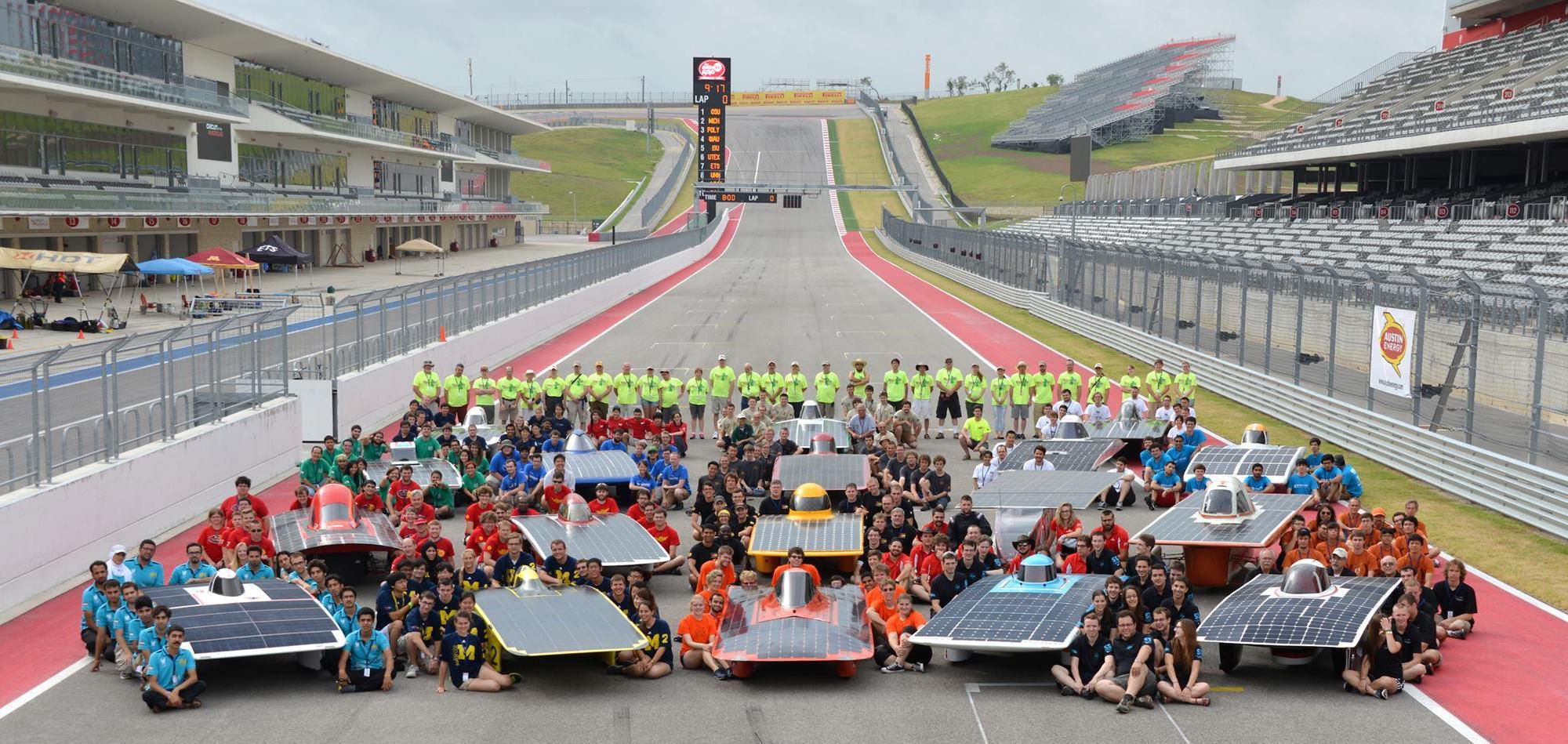Since 1990, young engineers and aspiring auto designers from universities across the world have been gathering every other summer to compete in one of the world’s premier solar vehicle races. This year, the field was brighter than ever.
The American Solar Challenge alternates years with the World Solar Challenge (held in Australia) and takes place in a different part of North America every two years. This year’s race began in Omaha, Nebraska on July 14th, and reached the finish line in Bend, Oregon on July 22nd, with a course that roughly followed the path of the early pioneers on the Oregon Trail. The race is held on public highways, in a multi-day rally format. The winner is determined by which team can complete the entire course with the shortest total elapsed time.
This year’s race proved to be a David and Goliath story, and after completing all five legs of the race, an Australian team from Western Sydney University unseated the solar racing giant University of Michigan. With a development and support team half the size of many of the seasoned competitors, WSU’s car, Unlimited 2.0, defeated Michigan by 16 minutes– a squeaker by solar car racing standards. Project lead Saami Bashar called the final days of the event “very stressful, very competitive and very close.”
“Michigan is a high-caliber team, they are such fierce competitors, they had a lot to prove by racing against us, and they haven’t lost a competition since 2001,” Mr. Bashar told Australian Associated Press from the US on Monday.
Unlimited 2.0 utilizes a Monocoque Carbon Fiber chassis, carbon fiber wheels, a 960W Silicon solar array and 5kWh Lithium Ion batteries.
The results are in
Teams competed in three classes; single occupant vehicles (SOV), multi-occupant vehicles (MOV) and demonstration (DEMO.) 2018 was the first year to include the MOVs, with an Italian team from University of Bologna defeating another American solar racing giant, University of Minnesota. The final standings for the 2018 races are as follows:
SOV

MOV
DEMO
Solar Cars? Really?
Before you head out in search of a dealership to buy yourself a solar car, we need to point out that 100% solar-powered cars are not only not ready for commercialization, but they may never be. The solar race cars designed and built by the student teams are spartan affairs, something akin to a cross between a recumbent bike and a bobsled, with a canopy composed of no more than 6 square meters of photovoltaic cells. No trunk, no air conditioning, not even a cup holder.
“It’s about 95 degrees and humid,” Kathy Van Wormer, co-captain of the Oregon State University Solar Vehicle Team told Wired in 2008. “In the car, it’s about 110. However, what’s got us worried is the wind. The car is shaped like an airplane wing.”
Not only are the cars hot, cramped and slightly dangerous, but they also aren’t very fast. The average speed of the fastest cars this year was somewhere around 45 MPH.
Okay, so the 100% solar-powered car is still far in the future, but what about current EVs, could they benefit from onboard PV panels integrated into the roof, hood and trunk? Another Wired article points out that even Tesla’s electric semi truck, with all of its surface area covered in solar panels, would require 80 hrs to charge the batteries. Obviously, there are A LOT of solar panel performance gains to be made before passenger vehicles will be able to be self-charging.
For now, 100% solar-powered vehicles are a long way off, but let’s take a look at the gains made over the nearly 30 years of solar racing.
A history of technical breakthroughs
Like any form of auto racing, solar racing has seen significant advancements that are reflected, most clearly, in increases in both average and top speed, and decreasesin elapsed times. The University of Michigan won the first race in 1990 (then called the GM Sunrayce) covering just over 1800 miles in about 73 hours. That’s an average speed of under 25 MPH! Speeds have improved steadily, with top speeds now well over 65 MPH and average speeds pushing toward 50. Starting in 2008, new safety rules and restrictions on active panel surface area were instituted to keep student racers safe.
These gains are due primarily to the advances in solar panel efficiency, along with increased focus on more conventional automotive design areas like .aerodynamic efficiency and suspension packaging.
The future of design
The greatest thing about the Solar Challenge is the grassroots nature of the event. The teams are student-run, and the relative success of the teams depend on the establishment of a cross-disciplinary team of imaginative young people. Solar Tribune congratulates all of the teams who competed this year, and we hope to see more great things from these young innovators in the future!
In a world first @WestSydSolarCar have won the American Solar Challenge!! They are the first international and first Australian solar car team to win the competition. Amazing work guys! https://t.co/Ua2BSLzjiO @ASC_SolarRacing #ASC2018 #Unlimited pic.twitter.com/sW0Dhy7wg1
— Western Sydney Uni (@westernsydneyu) July 23, 2018










